


By Rohan Babu
The world has witnessed tremendous change since the 1980s. Proliferation of technology, changing world order with the collapse of the Soviet Union, large scale globalisation, etc., have made the world a drastically different place, where change has become the norm. Obviously, this has also had an impact on culture, and the nature of storytelling. While human emotions and our capacity to respond to stories are innate, and remain constant, the nature of stories that resonate has seen a considerable evolution. However, amidst all this evolution, two superstars of the Malayalam industry, Mohanlal and Mammootty, have managed to not only retain their popularity, but maintain their dominance, a feat that is particularly impressive given the transitory nature of fame and relevance in the entertainment industry.
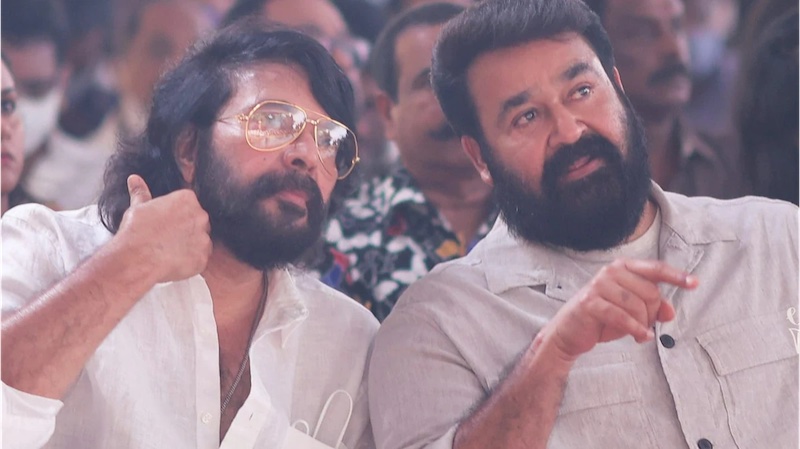
A look at their popularity share data on Ormax Stars India Loves (Malayalam) clearly outlines the extent of their dominance. Ormax Stars India Loves is based on an audience survey that runs 365 days a year, with a monthly sample size of 8,000+ across nine languages. The survey samples regular theatre going audience across India, who are asked to name their two favorite male stars and two favorite female stars in each language they watch films in. This data is analysed separately for male and female stars, and separately for each language. Since each participating audience names two stars for each gender, the total share across all stars in either gender adds up to 200% for any language. In languages where the no. 1 star enjoys dominant popularity, their share can be as high as 60%, i.e., 60% audiences picked him or her as one of their top 2 favorite stars in that gender for that language. The chart below captures average (Sep 2022-Feb 2023) Ormax Stars India Loves share of prominent male film stars across languages who debuted in the 1980s or earlier.
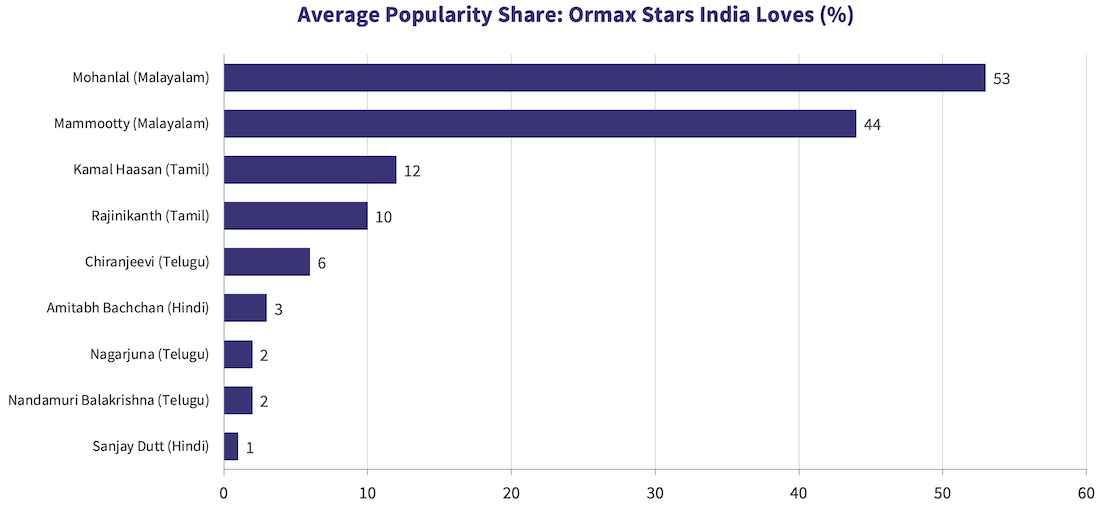
The extent of Mohanlal and Mammootty’s dominance becomes very evident when their popularity is juxtaposed against their contemporaries from other industries. While superstars like Kamal Hassan and Rajinikanth in the Tamil industry, or Chiranjeevi in the Telugu industry, still remain active and relevant, the fact that Mohanlal and Mammootty collectively hold 97% share in their industry (out of the possible 200%), highlights the degree of their popularity and relevance. Additionally, Mohanlal and Mammootty have also ruled the roost at the Malayalam box office, with 20 films between them featuring in the list of top 10 Malayalam box office grossers over the 2016-22 period.
But what explains their sustained dominance? What makes these two stars so different from everyone else? A deep-dive into the history and evolution of the Malayalam film industry, and an understanding of its current dynamics, shed light on a few possible reasons for the same.
The biggest superstars in Kerala, in the 1970s, were Jayan and Prem Nazir. While Prem Nazir played a superstar who was charming, with many famous romantic roles to his credit, Jayan played the role of a more conventional macho superstar, known for his on-screen action and impactful punchlines. By the end of the 1970s, Prem Nazir, being the older of the two, moved into supporting roles, while Jayan’s brand of cinema, and his superstardom, was more firmly established.
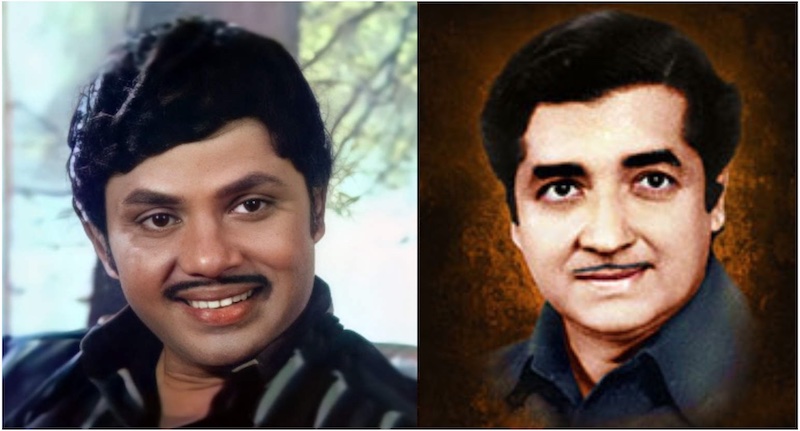
But as the new decade started, Malayalam cinema suffered through one of its most definitive and tragic incidents. Jayan’s untimely death in an accident, during the shoot of his film Kolilakkam, shook the entire industry. Post his death, despite a surge of Jayan imposters cropping up in Malayalam cinema, no one was able to fill the vacuum left by Jayan’s demise, and by Prem Nazir’s lesser involvement in lead roles. This lack of an active superstar in the preceding generation is an important reason why both Mohanlal and Mammootty were able to carve their own space in the industry, progressively becoming superstars in their own unique manner. When Mohanlal moved from being a star to a superstar, it involved him playing an anti-hero protagonist in the titular role of Rajavinte Makan (1986), a good six years after Jayan’s demise. Similarly, when Mammootty became a superstar with New Delhi (1988), it was in a film that was mainly author-backed, with no real conventional moments of stardom.
The second reason for Mohanlal and Mammotty’s sustained relevance is the diverse roles and genres they dabbled in, preventing themselves from being susceptible to competition, while using their stardom to simultaneously shape audience’s interest. While Mohanlal and Mammootty’s rose to even greater stardom in the 1990s, two other actors - Suresh Gopi and Jayaram - were being spoken of in the same breath. However, these stars have failed to hold onto their stardom over the last two decades, with a younger crop of stars like Prithviraj, Fahadh Faasil, Tovino Thomas and Dulquer Salmaan performing much better at box office.
For both Suresh Gopi and Jayaram, the biggest hits of their respective careers were in the police action-thriller and ‘feel-good’ family drama genres respectively. This over-reliance on one facet made them susceptible to future competition. As a result, it was easier for a successor to compete with them, as compared to Mohanlal and Mammootty, who were more diversified in their approach.
Another reason for Mohanlal and Mammootty’s success is their consistency. Both have been active, including producing films, for the last four decades. When a superstar takes a break, it presents an opportunity for new talent to come up. In the case of Rajinikanth or Kamal Haasan, these consistent breaks were a big contributing factor for Ajith and Vijay’s rise to superstardom. In comparison, the two Malayalam superstars haven’t taken such breaks, preventing an easy opportunity for new talent to take their position. The number of movies they end up headlining in a year is generally more than the number of movies of younger stars like Dulquer Salmaan and Fahadh Faasil feature in. This is also a result of the nature and working style of the Malayalam film industry, which produces relatively smaller budget films within shorter schedules, compared to other major film industries in India. With a consistent churn of films from these superstars, they have been able to deliver hits at regular intervals, remaining relevant in the eyes of the Malayalam film audience.
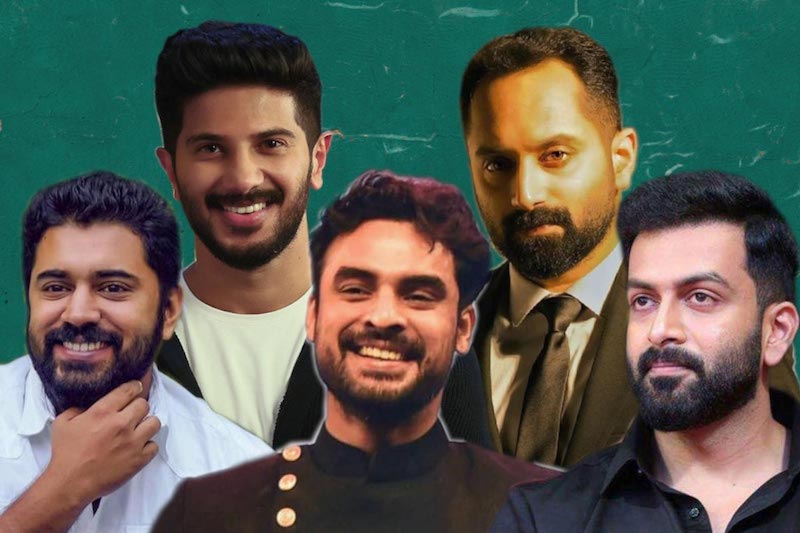
Furthermore, Mohanlal and Mammootty’s willingness to reinvent themselves is a big contributor to their sustained success. In 2013, when Mohanlal was going through a rough patch, he chose to do a family drama, Drishyam, which went on to become one of the most successful Malayalam films of all time. However, Drishyam’s success didn’t mean that Mohanlal stuck to this template of playing a patriarch in family dramas. He went on to do action in Pulimurugan, political drama in Lucifer, etc., constantly providing variety to his audience. Even in Mammootty’s case, one can witness a consistent effort to reinvent, which reflects well in his box office performance in recent years. Especially in 2022, with Bheeshma Parvam and Rorschach, the audience got to see him in two different avatars, keeping him relevant even in the 51st year of his acting career.
What makes a star and what erodes stardom, in an absolute sense, is a subject that can be debated endlessly. What cannot be debated, however, is how tactful decisions, consistent work, variety of roles and staying away from the temptation of templatising work, has ensured that both Mohanlal and Mammootty could take advantage of the vacuum in the Malayalam industry in their starting years, and emerge as superstars who are dominant to this day.

Product update: Content testing for the horror genre
Based on our accumulated audience insights, we are introducing genre-specific drivers for horror films and series in our content testing tools, Ormax Moviescope and Ormax Stream Test
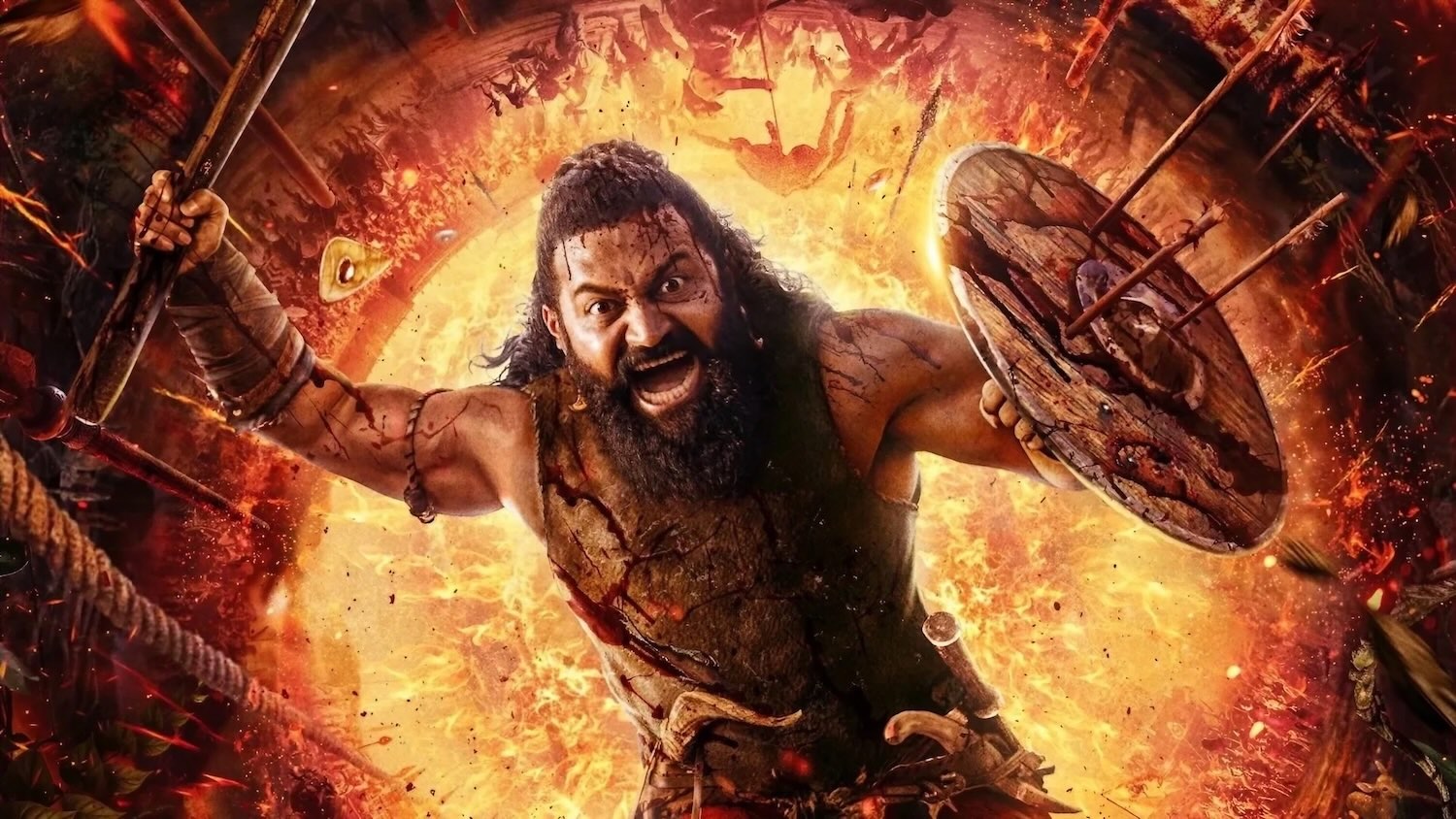
The India Box Office Report: October 2025
Driven by Kantara - A Legend: Chapter-1, October 2025 has emerged as the highest-grossing box office month of the year at the India box office, with gross collections of ₹1,669 Cr

Venn It Happens: SVOD & Theatrical audience intersection
The second edition of our new feature Venn It Happens illustrates the intersection between SVOD and Theatrical audiences in India, using data from Ormax Media's industry reports
Subscribe to stay updated with our latest insights
We use cookies to improve your experience on this site. To find out more, read our Privacy Policy